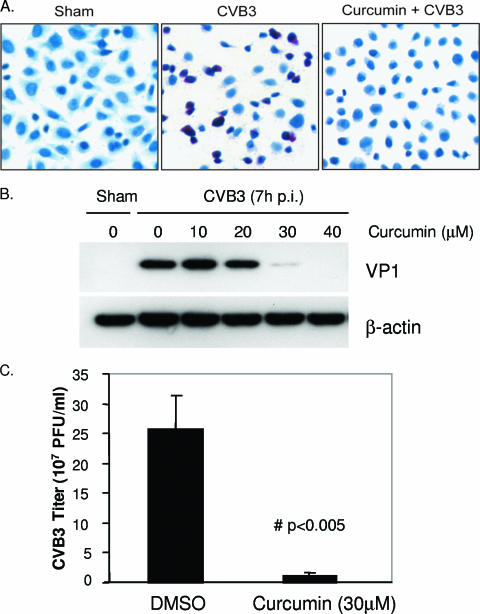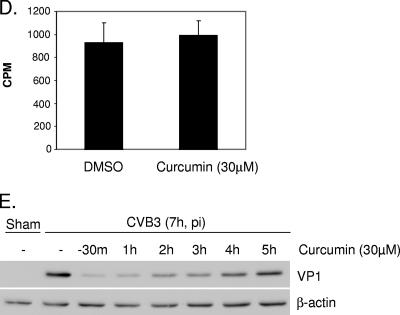FIG. 1.
Curcumin decreases replication of CVB3. (A) HeLa cells were sham infected with PBS or infected with CVB3 in the absence or presence of curcumin (30 μM). Six hours postinfection, viral RNA was detected by in situ hybridization using antisense riboprobes for CVB3 (red). Cell nuclei were counterstained with hematoxylin (blue). The data represent the results from two independent experiments. (B) HeLa cells were infected and treated with various concentrations of curcumin as for panel A. Seven hours postinfection, CVB3 viral-protein synthesis was examined using a monoclonal antibody that recognizes the CVB3 capsid protein VP1. To verify equal loading, the same blots were stripped and reprobed for β-actin. The data represent results from three independent experiments. (C) HeLa cells were infected and treated with curcumin as for panel A. Nine hours postinfection (p.i.), medium was collected and CVB3 progeny were measured by plaque assay. The data are means plus standard deviations (SD); n = 3; #, P < 0.005 compared to DMSO treatment. (D) HeLa cells were infected with 35S-labeled CVB3 for 1 h. Cell lysates were collected and measured for radioactivity using a scintillation counter (mean ± SD; n = 6). CPM, counts per minute. (E) HeLa cells were infected with CVB3, and curcumin (30 μM) was added to the cells at different times as indicated. Seven hours postinfection, cell lysates were collected and expression levels of VP1 and β-actin were examined.


